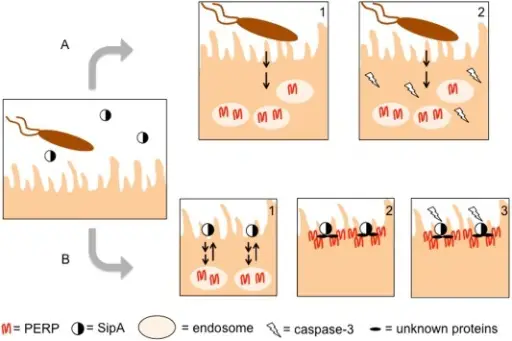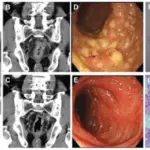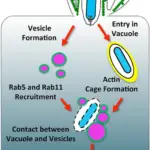Salmonella is a type of bacteria that can affect the intestinal tract.
What is the Pathology of Salmonellosis?
The pathology of salmonellosis is:
-Etiology: The cause of salmonellosis is food poisoning.
-Genes involved: None.
-Pathogenesis: The sequence of events that lead to salmonellosis is salmonella ingested in food survive passage through the gastric acid barrier and invade the mucosa of the small and large intestine and produce toxins. Invasion of epithelial cells stimulates the release of proinflammatory cytokines which induce an inflammatory reaction.
-Histology: The histology associated with salmonellosis shows enteropathy.
How does Salmonellosis Present?
Patients with Salmonellosis typically all genders at all ages. The symptoms, features, and clinical findings associated with salmonellosis include diarrhea, fever, and stomach cramps.
How is Salmonellosis Diagnosed?
Salmonellosis is diagnosed by testing a sample of stool, body tissue, or fluids.
How is Salmonellosis Treated?
Salmonellosis is treated by fluoroquinolones for adults and azithromycin for children.
What is the Prognosis of Salmonellosis?
The prognosis of salmonellosis is very good. it is a self-limiting disease in most patients. Even immunosuppressed patients can do well if the disease is diagnosed and treated promptly.



